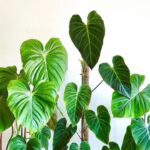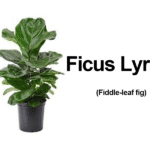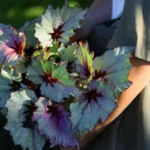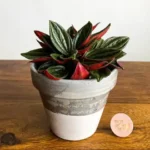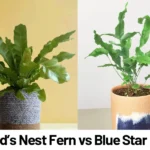Meet the Striking Alocasia Zebrina
For lovers of bold foliage and distinctive houseplants, the Alocasia zebrina never fails to turn heads. Native to Southeast Asia, this unique tropical plant is most recognized by its zebra-like stems — slender, tall, and adorned with stripy dark brown and light markings. Its arrow-shaped leaves elegantly perch atop these stalks, adding vertical drama to indoor spaces. While it can present challenges to new plant owners, with the right care the Alocasia zebrina thrives and becomes an eye-catcher in any plant collection.
Caring for Your Alocasia Zebrina
This is a plant that loves a balance between attention and respect for its tropical nature. By recreating conditions similar to its native environment, you can successfully keep it healthy and vibrant indoors.
Light Requirements
The Alocasia zebrina prefers bright, indirect light. Direct sunlight can scorch its delicate leaves, while too little light will slow its growth and cause leaf drop. A spot near an east or north-facing window works well. For rooms with southern or western exposure, sheer curtains will help filter intense rays.
- Ideal location: Bright, well-lit room with filtered sunlight
- Avoid: Dark corners or harsh midday sun
Watering Practices
This Alocasia demands a balanced watering routine. Its roots are sensitive to soggy soil, yet it hates drying out completely. During the growing season (spring to early fall), aim to keep the soil consistently moist, but always check the top inch first before rewatering.
- Water when the top 1-2 inches of soil feel dry
- Use tepid, filtered, or rainwater to avoid mineral buildup
- In winter, reduce watering frequency as growth slows
A well-draining potting mix and a pot with drainage holes are essential to avoid root rot.
Humidity and Temperature Needs
Coming from tropical jungles, Alocasia zebrina thrives in high humidity and warm temperatures. Indoor air, particularly in winter, can be dry, leading to brown leaf edges or stunted growth. Aim to keep the room temperature between 65°F–80°F (18°C–27°C), and maintain humidity above 60% if possible.
Ways to boost humidity:
- Use a humidifier near your plant stand
- Group it with other plants to create a microclimate
- Place the pot on a pebble tray filled with water (making sure the pot doesn’t sit in the water)
Soil and Potting Mix
A loose, chunky, well-draining soil mix is key for Alocasia zebrina’s root health. Aim for a mix that retains moisture without becoming soggy. You can use a high-quality aroid mix or customize your own using the following ingredients:
- 1 part potting soil
- 1 part perlite or pumice
- 1 part orchid bark or coconut coir
The pot itself should have drainage holes to prevent water retention at the base.
Fertilization Schedule
To support its vigorous foliage growth, your zebrina will benefit from regular feeding during its active growing months. Use a balanced, water-soluble fertilizer diluted to half strength every 4–6 weeks between spring and early autumn.
- Fertilize only during the growing season
- Flush soil monthly with plain water to prevent salt buildup
- In winter, stop fertilizing to allow the plant to rest
Repotting and Growth Habit
Alocasia zebrina generally needs repotting every 2–3 years or when you notice it becoming root-bound. Spring is the best time to repot since the plant enters an active growth phase. Choose a pot that is one size larger and refresh the potting mix to give the roots a nutrient boost.
Though the plant reaches a moderate height of 2–3 feet indoors, its upward-growing leaves on slim stems give it a tall, architectural silhouette that’s ideal for modern or tropical-styled interiors.
Common Challenges and How to Address Them
Yellowing Leaves
One or two yellow leaves over time is common as the plant replaces old foliage. However, widespread yellowing could be a sign of overwatering or poor drainage. Check root health and adjust your watering schedule as needed.
Browning Tips or Edges
Low humidity, under-watering, or salt buildup from tap water are common culprits. Increase humidity, water with care, and use filtered water when possible.
Leaf Droop or Collapse
Drooping leaves can signal several issues:
- Under or overwatering
- Sudden temperature drops or drafts
- Shock from repotting or changes in environment
Assess the light, water, and location, and give the plant a stable routine to recover.
Pests
Alocasia zebrina can attract common houseplant pests like spider mites, mealybugs, and aphids, especially in dry conditions. Inspect regularly and look under leaves for signs of infestation.
Treatment Tips:
- Wipe leaves with a damp cloth to remove pests
- Spray with insecticidal soap or neem oil weekly until clear
- Isolate the plant if infestation is discovered to prevent spreading
Seasonal Dormancy and Leaf Die-Back
Alocasia zebrina may go partially dormant in colder seasons, especially with reduced light and humidity. It may lose a few leaves, and growth slows significantly. This is normal—don’t panic. Reduce watering, hold off on fertilizing, and keep it in a warmer spot with as much indirect light as possible. When conditions improve in spring, new leaves typically emerge robust and healthy.
Tips for Happy, Healthy Growth
To summarize, here are simple tips to ensure long-term success with your Alocasia zebrina:
- Keep it in bright, indirect light
- Water consistently but avoid soggy soil
- Maintain high humidity using a humidifier or pebble trays
- Use a fast-draining, chunky aroid soil mix
- Fertilize lightly during the growing season
- Monitor regularly for pests and remove damaged leaves
Conclusion
The Alocasia zebrina is an exquisite and eye-catching houseplant that adds height, texture, and tropical flair to interiors. While it can be a bit finicky, understanding its needs and establishing a consistent care routine can reward you with lush, dramatic growth. Every plant owner will face the occasional yellow leaf or pest issue, but with the right environment and patience, the zebrina will thrive and become a standout feature in your home. Like all relationships, investing the right kind of care ensures your plant flourishes for years to come.
References
- DelPrince, J. (2020). Houseplants: The Complete Guide to Choosing, Growing, and Caring for Indoor Plants. Cool Springs Press.
- Berg, D. (2021). Plant Care Manual for Beginners. Green Leaf Publications.
- Royal Horticultural Society. (2023). Alocasia zebrina profile. Retrieved from https://www.rhs.org.uk/plants/search-results


